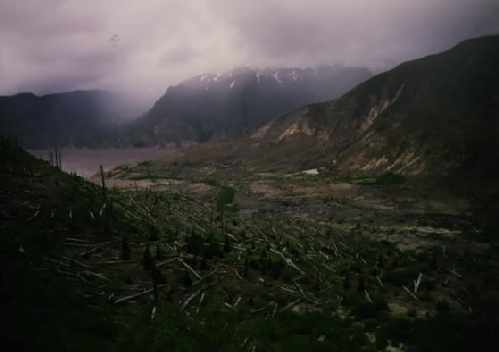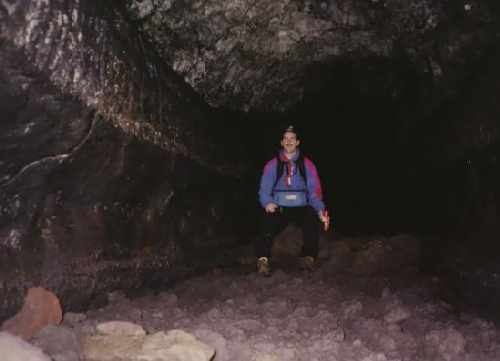 |
One of my goals for the trip out to Oregon/Washington was to visit Mt. St. Helens. The 1980 eruption fascinated me with the spectacular show of nature's power. My photos of St. Helens mainly consist of clouds and small glimpses of the mountain through the trees. Unfortunately, it stormed my entire time at the volcano. So, I have linked to some photos from the excellent USGS/Cascades Volcano Observatory site. All of the pictures from there are linked back to the site. There is much more on the site to read and see. |
 |
The 1980 blast removed the top 3,000 feet of the volcano and downed over four Billion board feet of usable timber, enough to build 150,000 homes, was damaged or destroyed. It has to be seen to be believed. Absolutely awesome!
Clicking on this photo will lead to a larger version, where you can see the people in the photo for some scale of the picture. They are in the bottom, right-hard side, in blue. |
 |
The "Devastated Area" was incredible! In the 17 years since to eruption, much has grown back to the areas wiped clean, but the level of destruction must have been amazing! This is a view of Spirit Lake, still filled with logs from the blast. |
 |
One of my more interesting sidelights of the trip was to go INSIDE Mt. St. Helens! The Ape Lava Tubes are cave-like tunnels left over from a 500-year-old eruption of the volcano. The more than two mile long cave can be hiked from end to end. The idea of being inside an active volcano is just wild.
This is the entrance to the tube. There was a ladder on this side of the tube to climb out of the cave. The hole is about 4 feet across. |
 |
The total darkness of the tubes can be lit by renting a lantern from the Park staff. Being on eastcoast time, I got there too early in the morning, so I used the self-timer on my camera to get this shot. For hiking, I used a couple of cheap, weak flashlights from K-Mart. If you go, spring for the better flashlight. The extra few dollars for more light would have been worth it. |
|